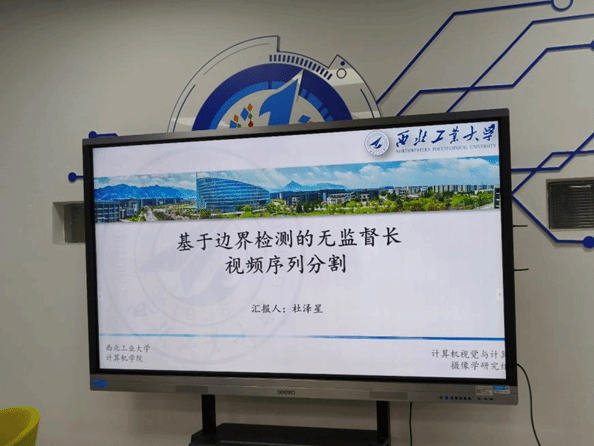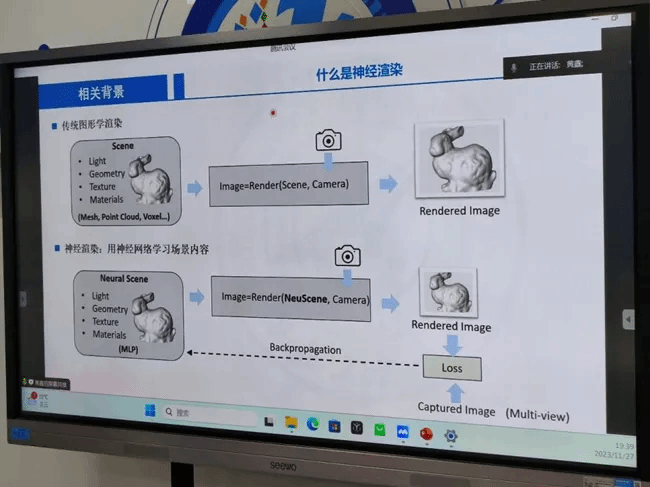On the evening of November 27, the 4th @ World "Touching Academic Frontiers" international exchange activity of the SCS 2023 autumn semester was successfully held in the conference room at the corner of the 2nd floor. This event invited two outstanding students from the school, Du Zexing and Huang Xin. They shared the latest research results and applications in the two hot areas of video sequence segmentation and neural cameras. Through interactions with outstanding students, the attending students could learn about the latest research trends and technological developments, and broaden their academic horizons. In addition, they had the chance to showcase their research results and improve their academic communication and expression abilities.

The theme of Du Zexing's report is "Unsupervised Long Video Sequence Segmentation Based on Boundary Detection". Du proposes an unsupervised behavior segmentation algorithm based on boundary detection to address the phenomenon that the spatiotemporal features of the same behavior are continuous in video sequences, while the spatiotemporal features of different behaviors are different. By using approaches such as feature smoothing, non maximum suppression, and feature clustering, the boundaries of different behaviors can be accurately defined. In addition, to meet the needs for real-time applications, the boundary detection algorithm has been extended to online mode, making it possible to define behavior boundaries in a fast and accurate manner. Experiments on commonly used behavior segmentation datasets have shown that this method can efficiently define behavior boundaries and improve segmentation accuracy.

Huang Xin delivered a theme report of "Radiation Field Reconstruction Based on Neural Cameras" based on her experience in attending the CVPR22-23. Neural Radiation Field (NeRF) is a newly emerged method for represent neural scenes. Unlike traditional representation methods, neural radiation fields use multi-layer perceptron (MLP) to implicitly model three-dimensional scenes. High fidelity points of sight can be synthesized through volume rendering. However, existing methods overlook the impact of imaging on the reconstructed content, resulting in low dynamic range, limited resolution, and limited depth of field in the scenes reconstructed by NeRF. In this sharing, Huang mainly introduced the neuroimaging model. By introducing solutions such as the response function based on neural camera, neural imaging model, and local ray function, the researchers have expanded the dynamic range of neural scene expression, achieving controllable resolution. These methods have produced significant experimental results in HDR imaging, full focus imaging, and resolution variable rendering, providing new ideas and solutions for the development of neural rendering.

The hosting of the @ World "Touching Academic Frontiers" international exchange series activities helps the students broaden their academic horizon, improve their professional knowledge and skills, cultivate their innovative thinking and problem-solving abilities. They said that they would devote themselves to learning and research with a more positive attitude, striving to become internationally competitive computer science talents. At the same time, the SCS will continue to organize more series of international academic exchange activities, providing students with more development opportunities and platforms, and cultivating more new talents with international competitiveness.


